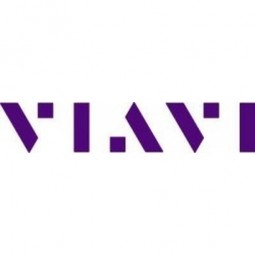
技术
- 应用基础设施与中间件 - 事件驱动型应用
- 传感器 - 液体检测传感器
适用行业
- 航天
- 电信
适用功能
- 维护
- 质量保证
用例
- 交通监控
- 交通模拟
服务
- 硬件设计与工程服务
- 测试与认证
客户
思科
关于客户
Cisco Systems是一家在全球开展业务的美国科技公司,以其计算机网络产品而闻名。
挑战
Cisco ASR 5000 系列可满足下一代移动互联网带来的高性能要求。 ASR 包含实时集成的会话状态智能,使其能够在每个会话的基础上有效地管理基于 IP 的流。
思科面临的挑战是如何在高度规模化的网络流量负载下有效地测试 ASR 增强型计费服务功能的状态可靠性,该功能是分组数据网络网关 (PGW) 的一部分。
解决方案
思科使用 TeraVM 来测试 ASR 5000 系列增强型计费服务功能的可靠性。 TeraVM 使思科能够在粒度基础上模拟流;基于唯一的订户 UE 和应用程序流。这对于证明 ASR 正确识别每个订户流至关重要。此外,TeraVM 支持多种应用程序类型的有状态仿真。
思科使用 Cisco UCS 硬件进行了测试,无需任何专有测试硬件。 TeraVM 作为一种虚拟化解决方案,确保思科能够在未来继续满足他们对 ASR 5000 系列的测试需求。
运营影响
数量效益

Case Study missing?
Start adding your own!
Register with your work email and create a new case study profile for your business.
相关案例.

Case Study
Airbus Soars with Wearable Technology
Building an Airbus aircraft involves complex manufacturing processes consisting of thousands of moving parts. Speed and accuracy are critical to business and competitive advantage. Improvements in both would have high impact on Airbus’ bottom line. Airbus wanted to help operators reduce the complexity of assembling cabin seats and decrease the time required to complete this task.

Case Study
Aircraft Predictive Maintenance and Workflow Optimization
First, aircraft manufacturer have trouble monitoring the health of aircraft systems with health prognostics and deliver predictive maintenance insights. Second, aircraft manufacturer wants a solution that can provide an in-context advisory and align job assignments to match technician experience and expertise.

Case Study
Aerospace & Defense Case Study Airbus
For the development of its new wide-body aircraft, Airbus needed to ensure quality and consistency across all internal and external stakeholders. Airbus had many challenges including a very aggressive development schedule and the need to ramp up production quickly to satisfy their delivery commitments. The lack of communication extended design time and introduced errors that drove up costs.

Case Study
Accelerate Production for Spirit AeroSystems
The manufacture and assembly of massive fuselage assemblies and other large structures generates a river of data. In fact, the bill of materials for a single fuselage alone can be millions of rows of data. In-house production processes and testing, as well as other manufacturers and customers created data flows that overwhelmed previous processes and information systems. Spirit’s customer base had grown substantially since their 2005 divestiture from Boeing, resulting in a $41 billion backlog of orders to fill. To address this backlog, meet increased customer demands and minimize additional capital investment, the company needed a way to improve throughput in the existing operational footprint. Spirit had a requirement from customers to increase fuselage production by 30%. To accomplish this goal, Spirit needed real-time information on its value chain and workflow. However, the two terabytes of data being pulled from their SAP ECC was unmanageable and overloaded their business warehouse. It had become time-consuming and difficult to pull aggregate data, disaggregate it for the needed information and then reassemble to create a report. During the 6-8 hours it took to build a report, another work shift (they run three per day) would have already taken place, thus the report content was out-of-date before it was ever delivered. As a result, supervisors often had to rely on manual efforts to provide charts, reports and analysis.

Case Study
Developing Smart Tools for the Airbus Factory
Manufacturing and assembly of aircraft, which involves tens of thousands of steps that must be followed by the operators, and a single mistake in the process could cost hundreds of thousands of dollars to fix, makes the room for error very small.








